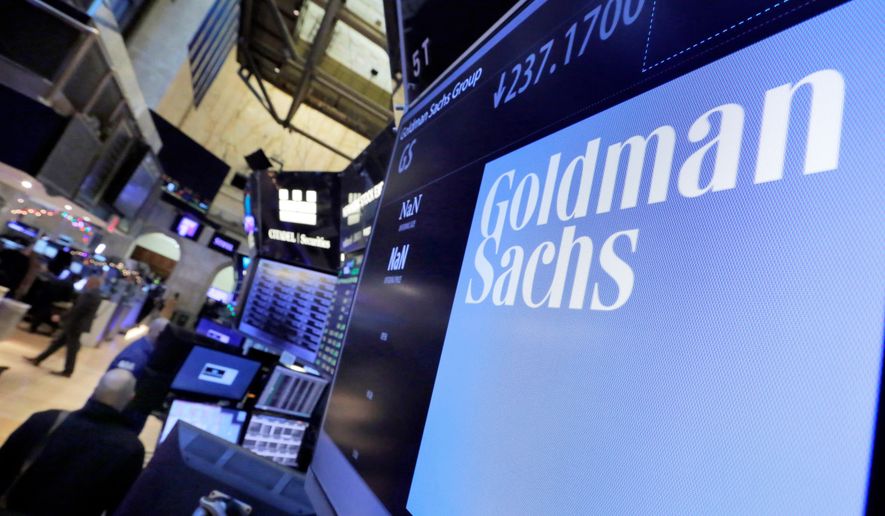NEW YORK (AP) - Despite the usual lull in activity, Wall Street’s biggest names had a pretty good summer.
The leading U.S. investment banks - Goldman Sachs and Morgan Stanley - each reported third quarter profits that beat analysts’ expectations Tuesday, helped by strong performance in their trading operations and better-than-expected revenue from stock underwriting.
Investors welcomed the strong results. Goldman Sachs shares nearly 2 percent to $219.39 in midday trading, while Morgan Stanley shares gained more than 5 percent to $45.78. Both companies’ stocks have struggled this year as investors have worried about the investment banks’ ability to bring in new business, and cope with slower trading businesses. Goldman shares are down 14 percent this year and Morgan shares are down 13 percent, even with Tuesday’s gains.
Goldman, the larger of the two banks, reported a profit of $2.52 billion in the quarter, or $6.28 per share. That’s up from $2.13 billion, or $5.02 per share, in the same period a year earlier. The result topped the estimate of $5.38 per share from Wall Street analysts, according to FactSet.
Meanwhile, Morgan Stanley earned a profit of $2.11 billion, or $1.17 per share, which is up 19 percent from a year ago, when the bank earned $1.78 billion, or 93 cents per share. The results beat analysts’ estimates of $1.01 per share, according to FactSet.
Both banks make most of their money from advising wealthy clients and corporations on deals, as well as from substantial trading operations. While both banks trade stocks, bonds, commodities and currencies, Morgan is known more for its stock trading operations while Goldman leans more into bonds, commodities and currencies.
Goldman is also dealing with recent changing of its guard as well. The third quarter was the last as CEO for Lloyd Blankfein, who held that post since 2006. He was replaced on Oct. 1 by David Solomon, who has brought in his own team to run the firm. Solomon replaced Marty Chavez as chief financial officer with Stephen Scherr.
Stock underwriting revenues were unexpectedly healthy at both banks, helped by more companies going public. Morgan had equity underwriting revenues of $441 million, up from $273 million a year ago, and Goldman reported underwriting revenues of $1.06 billion, up 20 percent from the 2017 quarter.
Morgan’s revenue from stock sales and trading - a core business for the bank - was $2.0 billion in the quarter, up from $1.9 billion in the same period a year earlier. In comparison, Goldman had net revenues in stock trading of $1.79 billion, up 8 percent from a year earlier, despite what Goldman described as “lower client activity” in the quarter.
During the third quarter, both banks saw little change in their individual advisory businesses. The third quarter is typically the quietest for both banks, with summer putting many dealmakers on vacation and August being a particularly slow month for U.S. businesses. Morgan reported $510 million in advisory revenues in the quarter, down from $555 million in the same period a year earlier. Goldman’s advisory revenues were $916 million, essentially flat compared to a year ago.
Goldman’s return on equity, which measures an investment bank’s profitability by how well it performs with the assets it holds, was 13.1 percent in the quarter. Morgan Stanley’s return on equity was 11.5 percent. Both banks aim to have their return on equity ratios above 10 percent.
Morgan Stanley’s wealth management arm also had a solid quarter, reporting a pre-tax profit of $1.2 billion. The wealth management business has been a focus for Morgan’s top management for some time, as the bank has looked to diversify its businesses after the financial crisis. Morgan saw clients bring more assets under management during the quarter, and the bank grew interest income, helped by a recent push by Morgan Stanley to do lending to asset management clients using their wealth as collateral.
Goldman also has been increasingly focusing on its non-investment banking businesses as well. Goldman’s consumer banking arm, known as Marcus, offers savings accounts in the U.S. and now the United Kingdom, as well as personal loans. Goldman disclosed to investors Tuesday that it has now $26 billion in deposits in its high-interest online savings accounts and CDs. The bank also now has $4 billion in personal loans outstanding.
Firm wide, Goldman Sachs reported revenues of $8.65 billion and Morgan had net revenues of $9.87 billion.




Please read our comment policy before commenting.